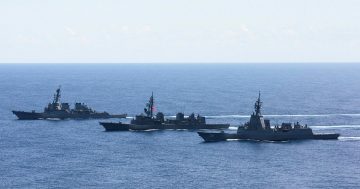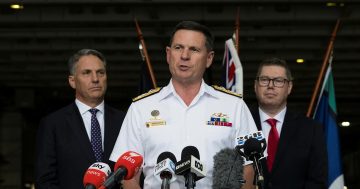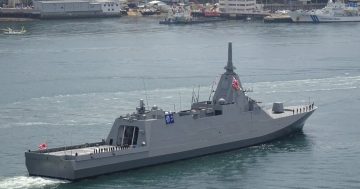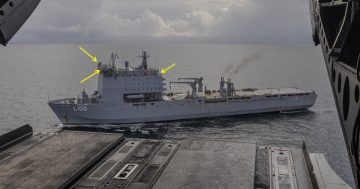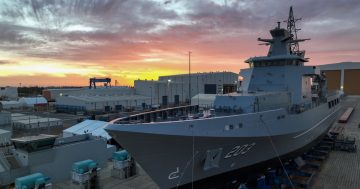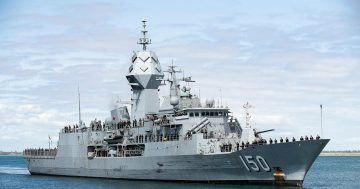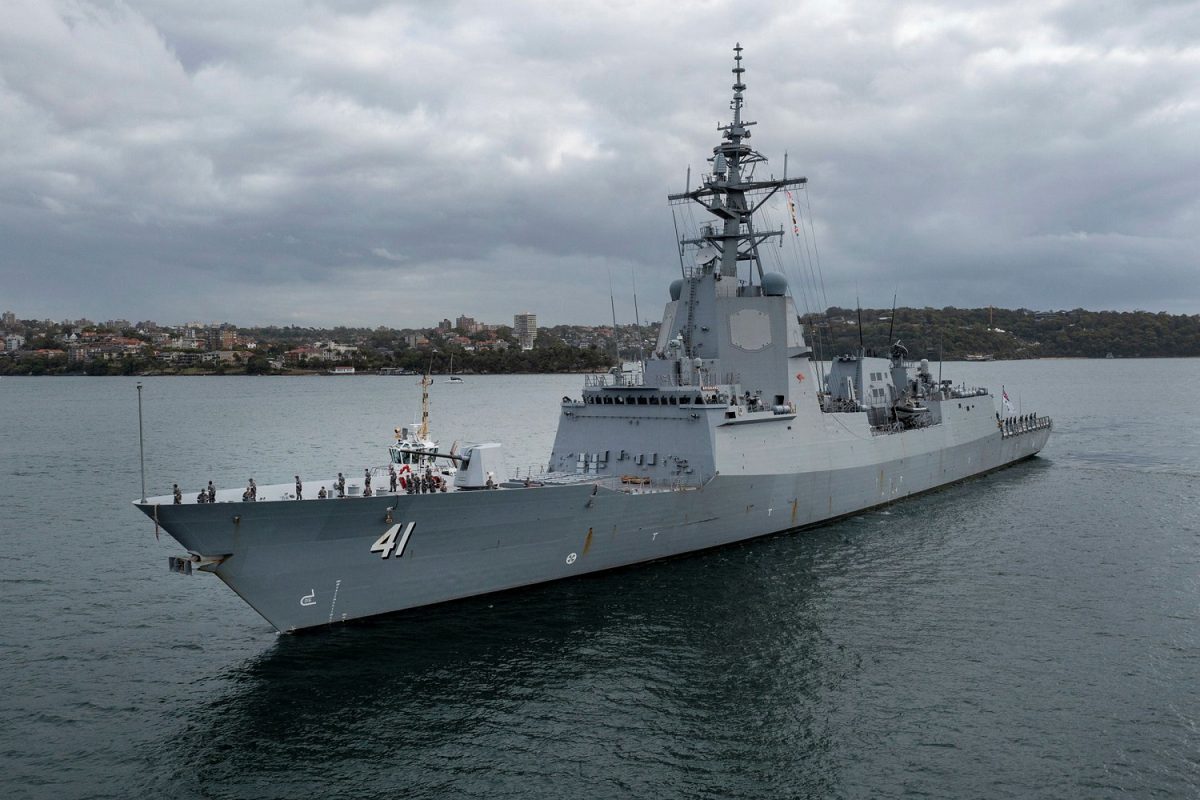
An additional build run of Hobart class destroyers as proposed by Navantia may be considered. Photo: ADF.
An independent review into the Royal Australian Navy’s planned surface combatant fleet has been completed and handed to Defence Minister and Deputy Prime Minister Richard Marles.
The review – authored by retired US Navy Vice-Admiral William Hilarides, former Secretary of the Department of Finance Rosemary Huxtable, and former Commander Australian Fleet Vice Admiral Stuart Mayer – was commissioned as a result of a recommendation made in the Defence Strategic Review (DSR), the public version of which was released in April this year.
But it has been reported the “necessary time to consider” the review will not see any decisions made on the Navy’s shipbuilding programs until February next year at the earliest.
A ministerial release states the review team “engaged a range of government officials, Australian Defence Force personnel, industry experts and partners to assess the capability requirements needed to meet our strategic circumstances”.
The review team considered more than 63 submissions and held more than 20 one-on-one sessions with industry and state and territory government representatives. Representatives from 83 companies and state and territory governments also attended an industry briefing day in June.
Described as a “short, sharp analysis”, the review was commissioned to determine whether the planned size, structure and composition of the Royal Australian Navy’s surface combatants will complement those capabilities provided by the planned nuclear-powered submarines being acquired under the AUKUS construct.
“The independent analysis into Navy’s surface combatant fleet capability will help ensure our Navy’s surface combatant fleet is fit for purpose and appropriate for our strategic circumstances,” Mr Marles said in a statement.
“We will take the necessary time to consider this analysis to ensure we have an appropriately balanced surface fleet that contributes to a fully integrated and more capable Defence Force.”
Minister for Defence Industry Pat Conroy said the Independent Analysis Team took into account advice and data from Australian industry as well as experts around the world in the development of the report.
“The analysis and its recommendations will contribute to a robust and capable defence and shipbuilding industry,” Minister Conroy said.
That timeframe seems to fly in the face of the supposed urgency of the regional threat as has been repeatedly touted by politicians on both sides in recent years, and highlighted in the DSR.
That the government now needs another six months to consider the review suggests that rather than recommend a ‘steady as she goes’ approach, some big changes to the Navy’s current plans may be being considered.
The Navy’s current shipbuilding plan sees nine Hunter class frigates replacing the eight current ANZAC class frigates from 2030 to 2040, and 12 or more Arafura class lightly armed offshore patrol vessels (OPV) replacing the Armidale class and Cape class patrol boats from 2024 to 2030. Derivates of the Arafura class may also be pressed into secondary duties including marine survey, mine warfare, and as parent vessels for autonomous aerial and underwater vehicles.
The Navy also has three Hobart class destroyers in service. These will soon undergo an upgrade that will see major improvements to their weapons and combat systems.
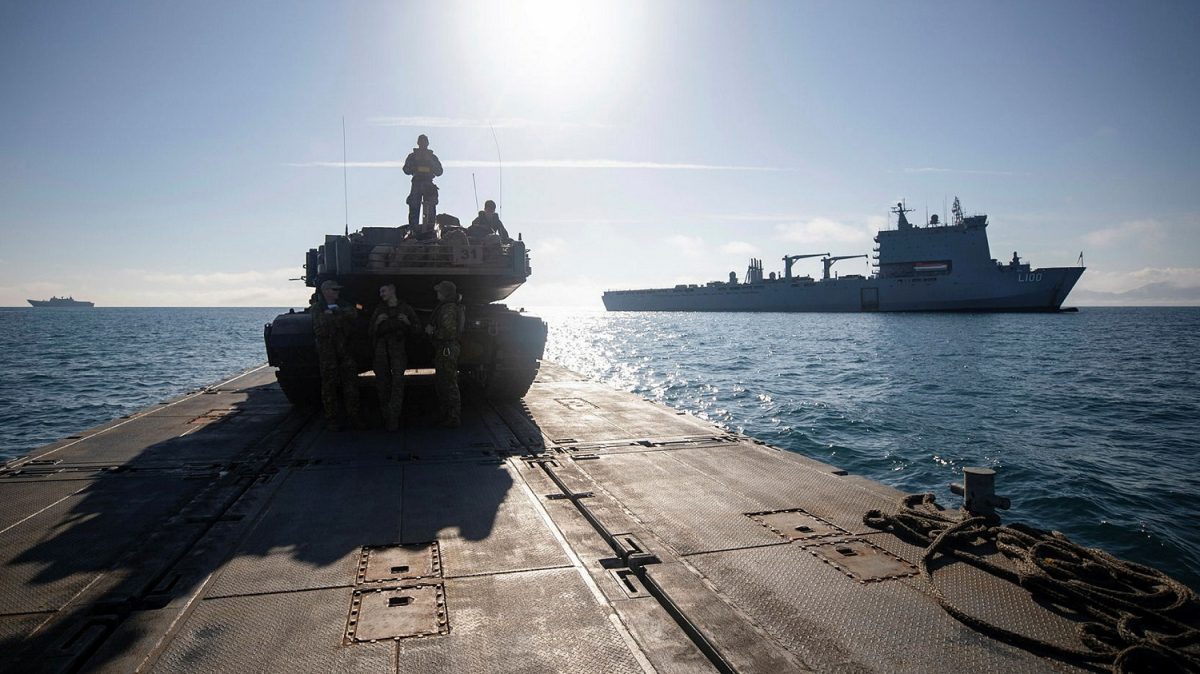
The amphibious Canberra class LHDs (far left) may receive some upgrades, but HMAS Choules (right) will soon need to be replaced. Photo: Navy.
The two large Canberra class Landing helicopter Dock (LHD) amphibious vessels aren’t due for replacement anytime soon but the single former-UK Royal Fleet Auxiliary amphibious ship HMAS Choules is. The Navy’s two Supply class auxiliary oiler replenishment (AOR) vessels are new.
Possible recommendations could see changes to the Hunter class and Arafura class buy profiles and schedules, the acquisition of additional Hobart class destroyers or, as has been suggested, a smaller corvette-size class, a recommendation for a replacement for HMAS Choules, the introduction of additional AORs, and possible improvements to the Canberra class.
The original designer of the Hobart class, Spain’s Navantia has reportedly proposed to build additional vessels which can be completed quickly and economically at its Ferrol shipyard in Spain. Likewise, the Arafura class’s designer, Luerssen has proposed an improved version of its OPV design which would be close to a corvette in size and capability.












